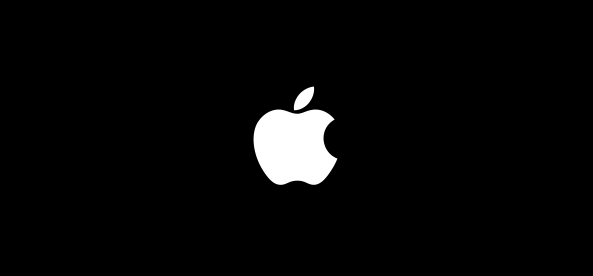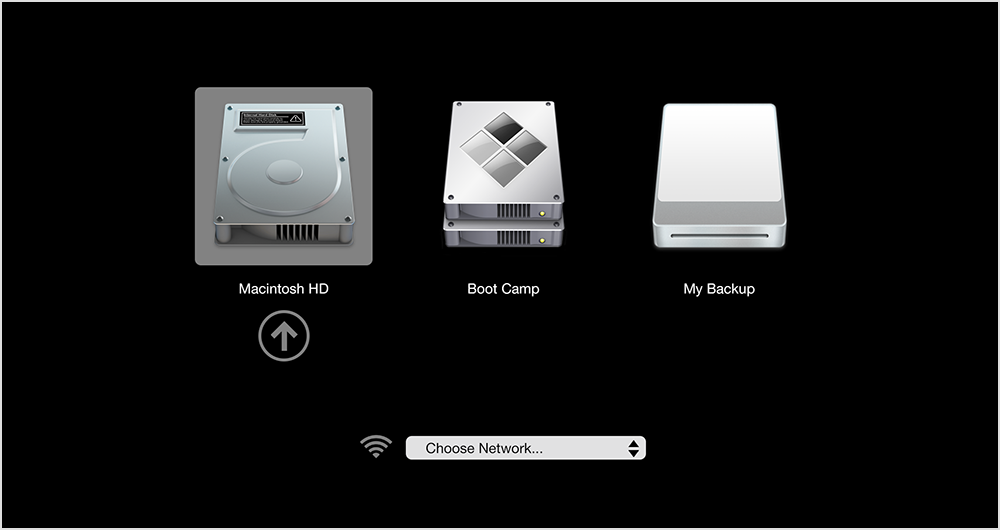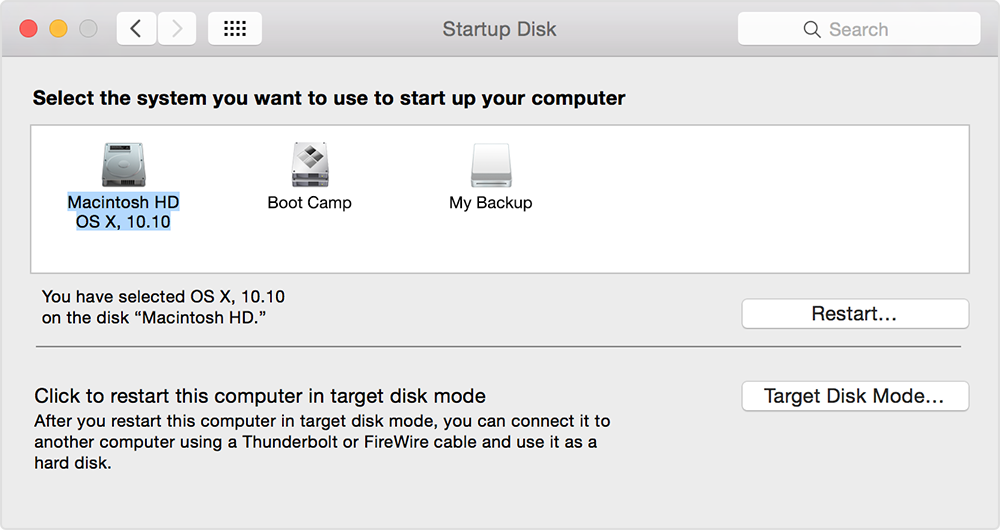Mac Os X 10.6 8 Startup Disk Download Updated
Mac Os X 10.6 8 Startup Disk Download

Near people are content with booting their Mac straight into macOS, simply certain multi-kick situations warrant choosing a different startup disk. But why would anyone in their right mind have multiple operating systems on their estimator, yous ask?
Well, if yous like trying out new things out earlier they're available to everyone, chances are yous keep the latest beta of macOS installed on a separate partition.
As well, some people like yours truly prefer to keep a bootable USB thumb drive in a condom place for times when something terribly wrong goes with their Mac.
In that location are two ways to choosing a startup disk.
Ane involves choosing a kick deejay via a Organization Preferences pane called Startup Disk, which my colleague Jeff recently covered. This tutorial deals with the other method which involves picking a boot disk as your Mac is starting up.
This tutorial will brainwash you on choosing a boot deejay during the startup process using a feature of macOS called Startup Manager and explain why and when to use Startup Manager over selecting a startup disk in System Preferences.
Allow's get started.
What's a startup disk?
A startup disk is a partition of a drive or a volume that contains a usable operating system. Your startup disk doesn't take to contain macOS.
For example, your Mac tin boot directly into Windows if you're using Kick Military camp. It can also boot into Ubuntu or whatsoever other operating system supported past your Mac's hardware.
As mentioned before, you can, one, prepare your computer to automatically use a startup disk using Organization Preferences, and two, temporarily override this selection at boot time using Startup Manager.
What is Startup Manager?
Startup Manager is a congenital-in application that y'all can invoke during the startup process to pick a book to boot your Mac from.
How to choose a startup deejay at boot time
To selection a disk to start your Mac from while it's booting, follow these simple steps for using macOS' built-in feature chosen Startup Manager, which can be invoked via a simple keystroke.
Pace ane: Turn on your Mac past pressing the power button, or restart it if it's already on by choosing Restart in the Apple tree carte du jour.
Stride 2: Press and hold the Option (⌥) key immediately upon hearing the startup chinkle and release the key later Startup Manager appears. Startup Manager will browse continued drives and will present drive icons of any volumes it finds, as shown beneath.

Step three: Highlight the volume you want to use by using your mouse or trackpad, or left and correct pointer keys.
Pace 4: Double-click or printing the Return key to boot your Mac from the book you just selected. Keep in mind that your Mac can only commencement upwardly from a disk containing an operating system.
Tip: You lot tin can also adhere external hard drives with an operating system: Startup Manager will automatically add bootable volumes as you connect them.
How to modify your default startup disk
To tell your Mac to automatically use a specific startup volume each time your restart or turn it on, open the Arrangement Preferences awarding in the Dock and click the Startup Disk pane. Yous will exist presented with various disk icons, as shown in Jeff'due south video walkthrough embedded beneath.
Now select the system you would like to use to startup your computer and click the Restart button. From this bespeak on, your Mac will e'er boot into the selected startup disk until you modify your choice in System Preferences or temporarily override it through Startup Managing director.
Startup Managing director vs. System Preferences > Startup Deejay
Equally explained earlier, choices you lot make via the Startup Disk pane will stick until yous choose another 1 in Organization Preferences or temporarily override these defaults at boot time in Startup Manager.

Full tutorial: how to choose a startup disk using Arrangement Preferences.
So when should you lot use Startup Manager over Arrangement Preferences?
Basically, if you lot want your Mac to boot automatically into Windows ten every time it's restarted or turned on, useOrganisation Preferences > Startup Disk. Want to boot into Windows, Ubuntu or whatever but just this one time, without changing your default startup disk?
Apply Startup Manager instead.
Startup Manager won't allow you select a startup disk?
If y'all cannot choose your startup deejay in Startup Manager, make sure that it contains a bootable re-create of an operating system such as macOS, Windows or Linux.
Simply formatting a bulldoze or partitioning a disk won't cutting information technology because Startup Manager looks for partitions and connected drive that incorporate a usable operating organization.
If you're interested in creating a dual-boot environment on your Mac, bank check out these easy to follow tutorial that cover deploying Yosemite and El Capitan on a divide partition and USB flash drive:
- How to install Os X ten.10 Yosemite on a separate partition
- How to install Os 10 10.11 El Capitan on a divide partition
- How to create a bootable Os X El Capitan USB wink bulldoze
For additional insights, browse our archive of how-to posts, tips and tutorials.
Five common use cases for Startup Manager
In that location are many situations that warrant using Startup Manager. Hither are some of the more than obvious scenarios that average users might encounter:
1. Install an operating system from external media
If you're old-school and your Mac has an optical drive connected to information technology, you can insert a disc containing an installer for macOS, Linux, Windows or other supported operating system and boot direct into the installer via Startup Managing director. A usable operating organization tin also reside on a FireWire, Thunderbolt or USB external drive. As long as the deejay is bootable, it should show up in Startup Manager.
2. Temporarily override default startup disk
As mentioned before, y'all should use Startup Manager to choose a startup disk for a unmarried session equally it won't permanently change your default startup disk selected in System Preferences. Let's say Yosemite is your default startup disk and you have El Capitan on another partition. You lot tin utilise Startup Manager at kicking time to temporarily override Yosemite and start up your computer straight into El Capitan.
3. Kick into other OS natively
Sometimes yous may be wondering what's life similar on the "other side."
In improver to running another operating organization alongside macOS using virtualization software such as Parallels Desktop, information technology's also possible to kicking your Mac directly into a "strange" operating arrangement via Startup Manager. Typically, I would boot my Mac into Microsoft's Windows vii whenever I feel like playing that first-person Windows shooter that anybody'due south talking about.
four. Software development and testing
People who develop software for a living typically take multiple instances of macOS to test their apps in multiple environments in order to ensure they run without a hiccup. In addition, many bloggers, journalists and ability typically continue macOS betas separate from stable macOS releases. Startup Manager makes it ridiculously easy to choose between them at boot time.
5. Troubleshoot startup bug
Has your Mac been acting up lately?
An improper shutdown, forced restart or ability interruption tin can lead to file arrangement errors that may prevent your figurer from starting upward. Choosing a different boot device is typically the get-go pace in resolving common startup problems. And to exist 100 per centum on the safe side, I take some other re-create of macOS installed on a USB drive should something go terribly wrong with my Mac and I'm in the middle of doing my work.
Other ways to start up your Mac
Your Mac tin start up in a number of dissimilar ways, including the following methods that our tutorials provide step-past-step instructions for:
- Rubber Fashion—Safe Style disables certain features of macOS and loads only essential components to make troubleshooting software issues simpler. In addition, Condom Mode includes an automatic deejay check and repair which might resolve boot problems and permit yous to starting time upwardly your computer successfully.
- Verbose Mode—Verbose Mode is a text-merely surround which displays status letters as the startup procedure progresses. Use Verbose Mode to resolve issues with kernel extensions and custom hardware. If that doesn't sound too sexy, you tin can enter Verbose Mode to see what's going on behind the scenes and sentinel as macOS is loading its components.
Nosotros will exist covering more than ways to start up your Mac in time to come tutorials.
See too:
- How, why and when to boot your Mac in Safe Way
- How to boot your Mac in Verbose Mode
- How to choose a startup disk on your Mac
- How to delete a partition on Mac
If you like this tutorial, please consider bookmarking and passing information technology along to your friends and other Mac support folks.
Have a cool proposal for a corking how-to?
Why don't you submit your ideas to tips@iDownloadBlog.com? We promise to choice all-time submissions and take them into account in our future coverage planning
Mac Os X 10.6 8 Startup Disk Download
Posted by: reedforend.blogspot.com
